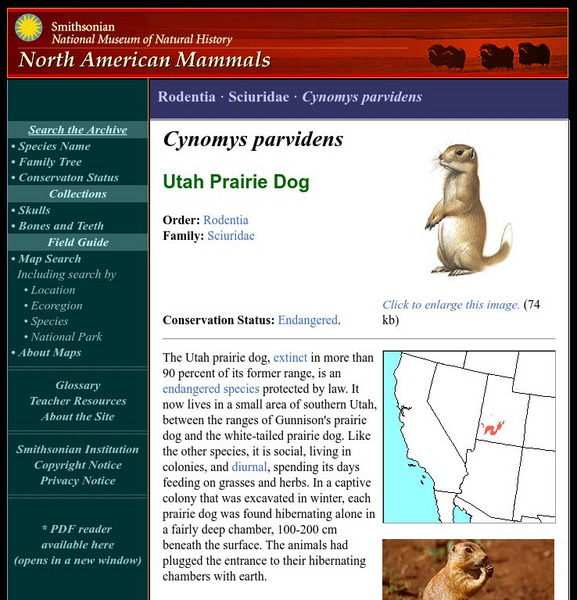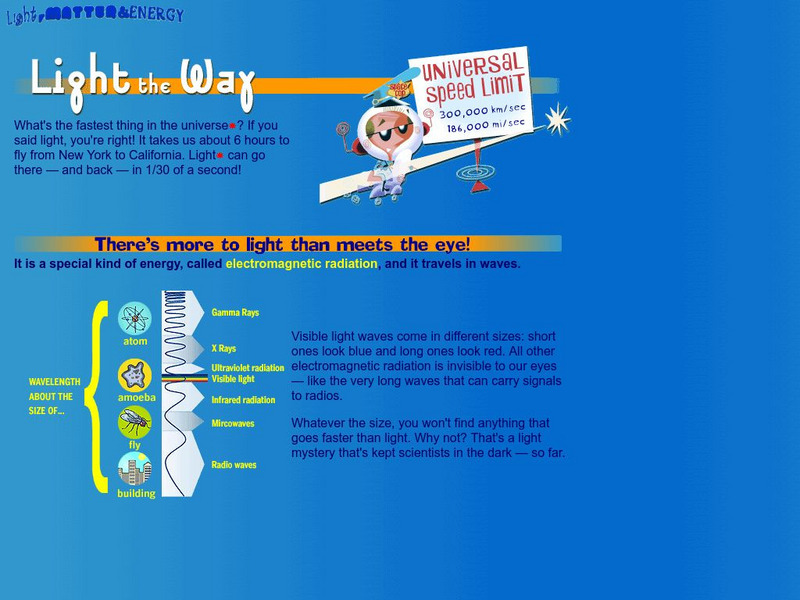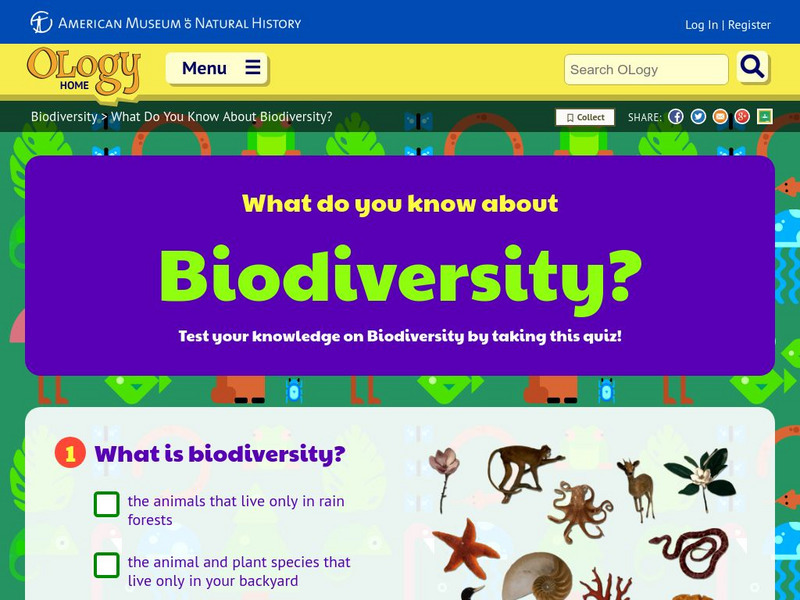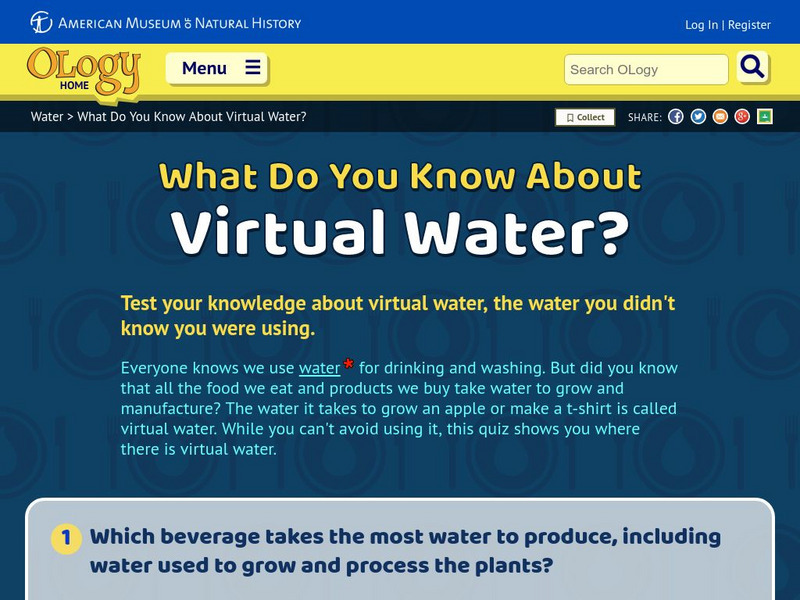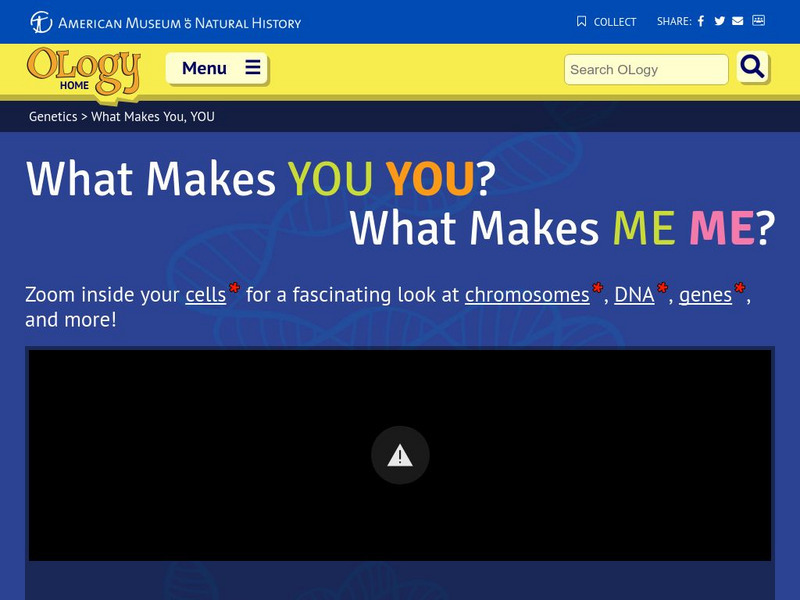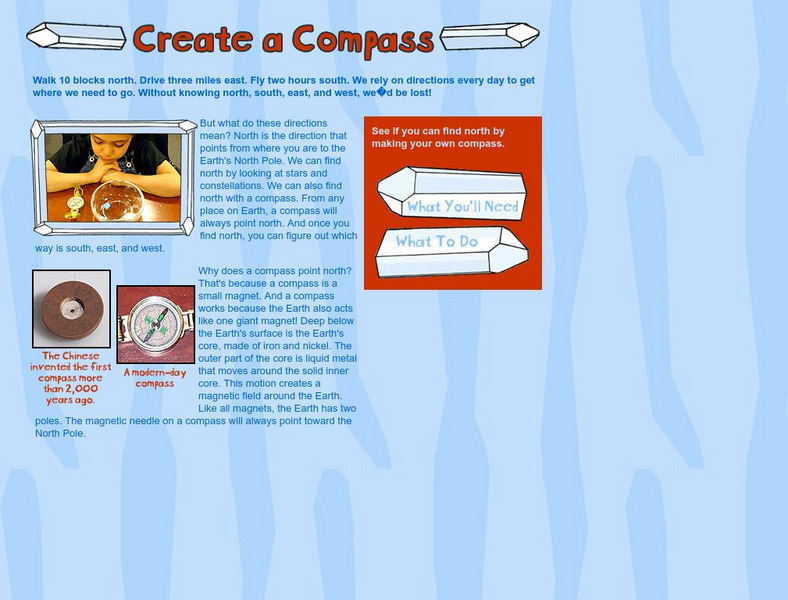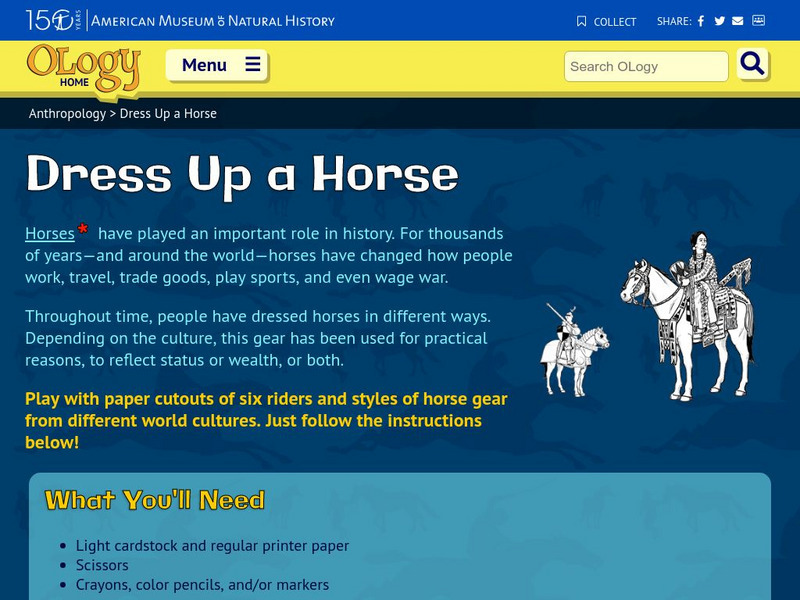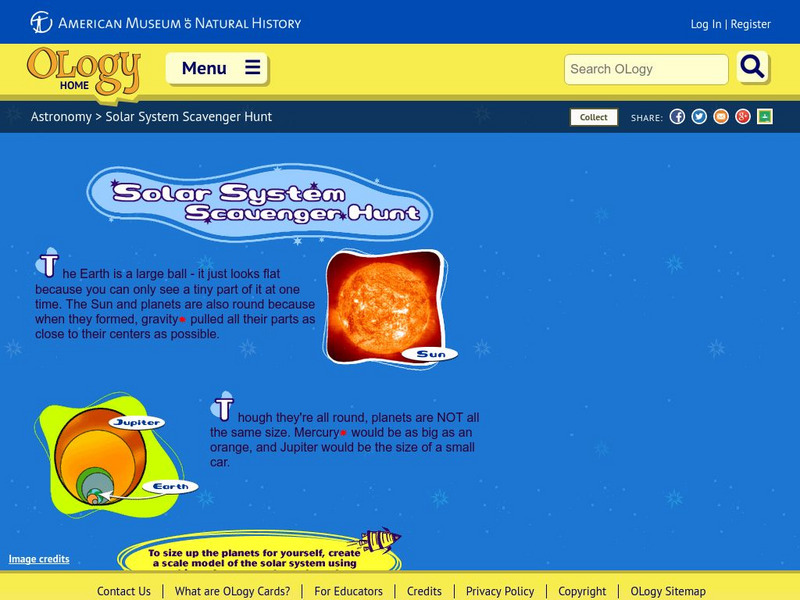Smithsonian Institution
National Museum of Natural History: American Mammals: Utah Prairie Dog
The Utah prairie dog, extinct in more than 90 percent of its former range, is an endangered species protected by law. It now lives in a small area of southern Utah, between the ranges of Gunnison's prairie dog and the white-tailed...
Smithsonian Institution
National Museum of Natural History: American Mammals: White Tailed Prairie Dog
White-tailed prairie dogs are threatened in many places because they have been the target of pest control programs. They live in burrow colonies made up of groups of females and young. Learn more about the Cynomys leucurus, more commonly...
Smithsonian Institution
National Museum of Natural History: American Mammals: Virginia Opossum
The Virginia opossum, the only marsupial found north of Mexico, is an adaptable omnivore at home on the ground and in the trees. Opossums prefer forested habitats, but they are quite successful even in urban areas. Learn more about the...
Smithsonian Institution
National Museum of Natural History: American Mammals: Pallid Bat
Common throughout its range, the pallid bat occurs in arid and semi-arid regions throughout northern Mexico and the western United States. Pallid bats eat beetles, grasshoppers, and moths, and they forage for slow-moving prey, such as...
Smithsonian Institution
National Museum of Natural History: American Mammals: Spotted Bat
Conspicuous and distinctive, with three highly visible white spots on its black back, and larger-than-life ears for its body size, the spotted bat would doubtless be the object of more human attention if it flew during the day. As it is,...
Smithsonian Institution
National Museum of Natural History: American Mammals: Steller Sea Lion
Steller sea lions are divided into two groups for conservation purposes. Those that live around Alaska and Russia are classified as endangered. Learn more about the Eumetopias jubatus, more commonly known as a Steller Sea Lion, in this...
Smithsonian Institution
National Museum of Natural History: American Mammals: Greater Bonneted Bat
Greater Bonneted Bats live in rugged, rocky canyons typical of the arid Southwest, where they inhabit crevices in vertical cliffs. Because of their relatively large body size and narrow wings, these bats are unable to take off from a...
Smithsonian Institution
National Museum of Natural History: American Mammals: Mexican Ground Squirrel
Mexican Ground Squirrels have adapted well to human activity and are common inhabitants of roadsides, cemeteries, and golf courses. They are omnivores, feeding on the seeds of a variety of grasses and forbs, green plant material, and...
Smithsonian Institution
National Museum of Natural History: American Mammals: Long Eared Myotis
With its long, luxurious fur, which can range in color from dark brown to pale yellow, and its large, coal-black ears, the long-eared myotis is a striking animal. Long-eared myotis prefer roosting in rock outcroppings and dead trees....
American Museum of Natural History
American Museum of Natural History: O Logy: Stuff to Do: Drawing Dinosaurs
A tutorial on how to draw a realistic dinosaur starting from a picture of a skeleton.
American Museum of Natural History
American Museum of Natural History: O Logy: Light, Matter, Energy: Light the Way
What is electromagnetic radiation and how does it work? Review a captioned graphic that explains electromagnetic radiation and the visible and invisible types of radiation on the electromagnetic spectrum.
American Museum of Natural History
American Museum of Natural History: O Logy: All About Cloning
Learn what cloning is, how it works, what animals have been cloned, and about Dolly, the first mammal (a sheep) to be cloned from an adult cell. Click on the links to see flash cards on the topics.
American Museum of Natural History
American Museum of Natural History: O Logy: You Light Up My Life!
Brief explanation of observations that Arthur Eddington used to test Einstein's general theory of relativity. Click on the starred words to learn more about the topic.
American Museum of Natural History
American Museum of Natural History: Theory of Everything O Logy Card
Turn over this OLogy card to learn bite-size pieces of information about the theory of everything, also known as unified theory.
American Museum of Natural History
American Museum of Natural History: Triceratops O Logy Card
Flip over this interactive card to find fast facts, questions and answers, and other bite-size pieces of information about Triceratops horridus.
American Museum of Natural History
American Museum of Natural History: O Logy: What Do You Know? Biodiversity
Take a self-scoring quiz that tests your knowledge of biodiversity.
American Museum of Natural History
American Museum of Natural History: O Logy: What Do You Know? Virtual Water
A quiz to test your knowledge of the water it takes to grow and produce the food we eat and the products we buy.
American Museum of Natural History
American Museum of Natural History: O Logy: What Makes You You? What Makes Me Me?
Simple animation explains the function of chromosomes, genes, and DNA by letting you zoom into a cell nucleus for a closer look.
American Museum of Natural History
American Museum of Natural History: O Logy: Stuff to Do: Grow Rock Candy
Learn about the crystal patterns and shapes of select minerals (diamond, quartz, muscovite, and topaz) and how to grow your own rock candy crystals.
American Museum of Natural History
American Museum of Natural History: O Logy: Stuff to Do: Create a Compass
Step-by-step illustrated instructions for building a compass and testing its accuracy.
American Museum of Natural History
American Museum of Natural History: O Logy: Stuff to Do: Dress Up a Horse
For this activity, students dress a horse and rider in gear from six cultures. They then answer questions about their features and about similarities and differences between styles from different cultures. The horse, rider, and gear...
American Museum of Natural History
American Museum of Natural History: O Logy: The Tree of Life: True Bacteria
Visit the tree of life and discover characteristics, habitats, and examples of the world's true bacteria.
American Museum of Natural History
American Museum of Natural History: Rising Carbon Dioxide! What Can We Do?
Energy is used everyday coming from burning fossil fuels which releases carbon dioxide into the air. Discover what this has to do with global warming and how we can do our part to slow it down.
American Museum of Natural History
American Museum of Natural History: O Logy: Stuff to Do: Scavenger Hunt
Illustrated instructions for creating a scale model of the solar system.
